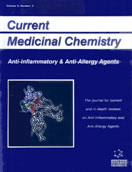Abstract
Conventional TCR-αβ T cells dramatically change the expression pattern of homing receptors at least twice during their development to effector T cells. The first change to emigrate out of the thymus and into secondary lymphoid tissues occurs in the thymus. The second change from naïve type to memory type occurs during T cell priming with antigens in secondary lymphoid tissues. Antigen presenting cells and cytokines play critical roles in the switch of homing behavior. However, the two unconventional T cell subsets, CD1d-restricted NKT cells and γδ T cells, are very different from conventional T cells in this respect. NKT cells and γδ T cells display the memory type migration phenotype as soon as they emigrate out of the thymus. This implies that these unconventional T cells do not need to migrate to secondary lymphoid tissues in order to acquire the migratory capacity to non-lymphoid tissues. In this regard, most CD1d-restricted NKT cells and γδ T cells are somewhat similar to polarized conventional effector T cells such as T helper 1 cells and NK cells in their migratory capacity. CD4+CD25+ regulatory T cells, however, are heterogeneous in their homing capacity in a manner similar to the conventional TCR-αβ T cells. Some CD4+CD25+ T cells have the migratory behavior of naïve T cells, while others have the homing capacity of memory T cells. The importance of these migration behaviors of unconventional T cells is discussed in this review.
Keywords: unconventional t cells, nkt cells, t cells, homing receptors, migration, chemokines
 3
3

